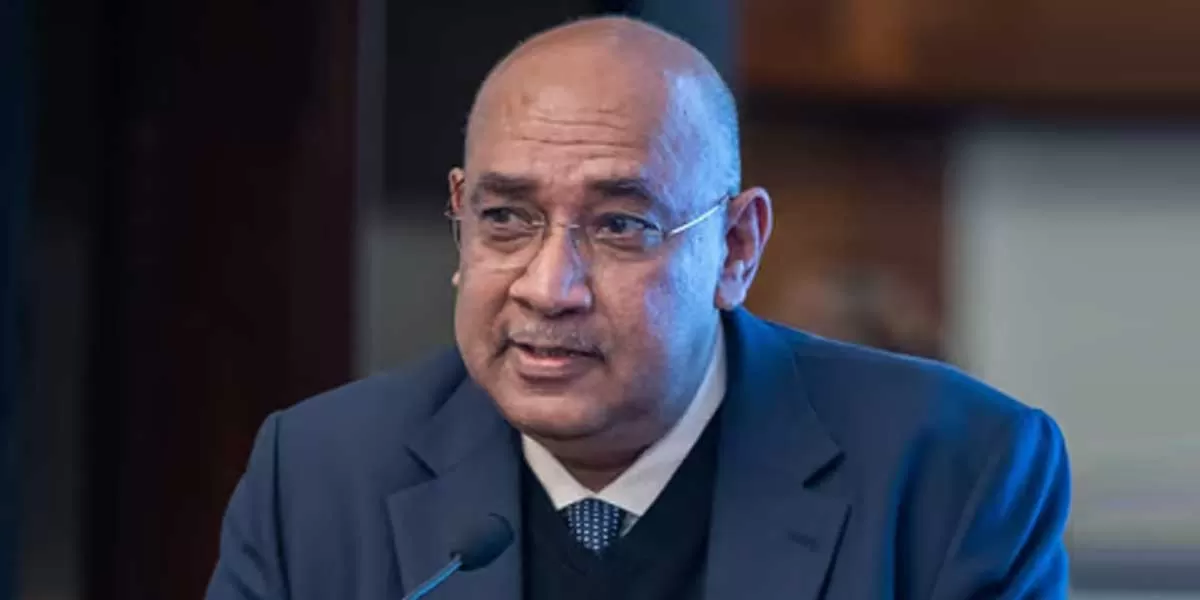As the relay financing framework slowly takes hold in infrastructure financing, the government-owned Indian Infrastructure Finance Co. Ltd (IIFCL) is busy prepping to support megaprojects, Dr. Padmanabhan Raja Jaishankar, MD tells Manish Pant. Alternate Investment Financing (AIF) to source funds from international investors is already being rolled out. Jaishankar is also optimistic that given the significant stress reduction, the Reserve Bank of India will finalise provisioning norms for infrastructure projects only after consulting all stakeholders.
IIFCL reported the most impressive set of numbers in FY24. What would you consider your biggest achievements during the fiscal?
We have been working according to a strategic plan. Our first and foremost achievement is a healthy bottom line to enter the Rs.20 billion club for the first time on an EBITDA basis, with the profit after tax being about `15.5 billion. We have achieved this while sustaining growth on a YoY basis over four years. We have brought our net non-performing assets down to 0.46 per cent. This has resulted from our persistent efforts towards reducing the cost of funding and efficient utilisation of resources, with our active treasury being an integral part of the entire process. We have also strengthened our internal policies, be it risk, credit, HR, IT owing to which our processes are now much better streamlined.
You have also registered significant growth in annual sanctions and disbursements YoY since FY20. How do you propose to build on this success over the next five years?
Our sanctions and disbursements have been the highest ever. This trend has been consistent over the last four years. Our strategy has been about growing with quality. Regarding our exposure, IIFCL was confined to three to four sectors till four years ago. Today, we are present in around 20! This expansion has helped diversify our portfolio and, at the same time, helped the company improve its risk management strategies. In the future, we want to ensure consistency through a 20-25 per cent growth over the previous year in both sanctions and disbursements.
You also started subscribing to infrastructure project bonds and lending to InvITs as part of the strategy to enter new growth areas. Even as you are expected to continue focusing on these two products, are you weighing other potential areas for investment?
IIFCL was among the first infrastructure financiers which took the onus of funding greenfield projects. Later on, as we stabilised, we entered new areas such as take-out financing and credit enhancement. When the InvITs were introduced, we immediately saw in them a good complementary product for take-out financing. We also found a complementary product in project bonds. We will continue our foray into those areas. We are now witnessing the maturing of the InvITs market, with several international investors coming in a big way. Not only that; we are now seeing emergence of more heterogeneous and diversified sectoral InvITs. That’s an interesting development and we are keen to get into it.
What we now see is a new and emerging asset class in the infrastructure sector where we have a set of completed assets that are being churned and a new set of investors, both domestic and international - including pension and insurance funds and PE (Private Equity) funds – are showing keen interest in investing in such assets. This is giving rise to a secondary market mechanism and enabling a churning of infrastructure assets. However, the need for infrastructure creation is never-ending and India needs several large infrastructure projects on the greenfield side. We have heard that NHAI (National Highways Authority of India) has lined up several BOT (Build-Operate-Transfer) projects this year. IIFCL has actively supported such projects and remains committed to helping them in the future.
As someone very bullish on the growth opportunities from the National Infrastructure Pipeline, do you see the Indian financial sector adequately geared up in skill sets, appraisals, and due diligence for megaprojects that will follow the economic growth anticipated over the next decade?
IIFCL’s journey has been co-terminus with the nation’s journey in the infrastructure sector. From a capacity-building perspective, we have a highly skilled workforce in place. Be it roads, bridges, tunnels, energy projects, airports, or data centres, we have financed the widest ranges of infrastructure sub-sectors in the country. As regards due diligence and appraisal mechanisms, we have put an integrated risk management framework in place. We have highly effective digital platforms for accounting, workforce appraisal, and project monitoring. We are also looking at efficient resource utilisation because that adds to our competence. Today, IIFCL has the lowest base rate in the entire market due to its strong treasury management.
In the last four years, there has also been a sharp decline in your gross and net NPA ratios. How was this achieved despite the challenges posed, among others, by the COVID-19-induced slowdown in the 2020-21 period?
Our GNPAs (Gross Non-Performing Assets) and NNPAs (Net Non-Performing Assets) stand at 1.61 per cent and are 0.46 per cent, down from around 18.53 per cent and 9.84 per cent from about five years ago. But it’s not just about net NPAs! Nearly 88 per cent of our portfolio comprises assets with external ratings of A, AA, and AAA, which is rare in India. We did face some issues during the COVID-19 pandemic. At that time, we chose a conservative approach in areas such as recognising income from assets upon realisation in cases where we had given a moratorium. Today, we are at pre-COVID levels and, in certain sectors, have even surpassed the earlier levels. In the future, we intend to utilise our digital platforms to the hilt while innovating in financial engineering and structured finance products to deliver cost-effective and long-term financial solutions.
In FY24, IIFCL has maintained a healthy Provision Coverage Ratio of over 70 per cent. So, how do you see RBI’s recent recommendations on higher provisioning norms for infrastructure projects impacting financing?
RBI has issued certain draft guidelines which are still under discussion and consultation. But they will be finalised only after detailed discussions with all stakeholders. As the draft provisions stand, we will discuss issues related to the provisioning norms with the RBI and the government. Since some of the proposed norms may lead to a disproportionate increase in provisioning, those aspects need to be examined more deeply. NBFCs (Non-Banking Financial Companies) and IFCs (Infrastructure Financing Companies) are already following the internationally accepted Ind AS accounting guidelines requiring the expected credit loss methodology for determining and arriving at provisions.
Today, as far as the Indian infrastructure sector is concerned, the stress is perhaps ebbing. Guidelines entailing stricter provisioning norms need to be examined from all angles. It’s not just about the financial provisioning. The non-financial covenants are also quite concerning and need to be reviewed. I have always felt the government has been at the forefront in driving the infrastructure sector’s growth by firing on all cylinders. The government’s policies and financing have led to greater impetus and focus on infrastructure. Consequently, the Indian infrastructure sector is in a sweet spot today because of the various structural reforms. That’s also among the main reasons behind our becoming one of the fastest-growing economies in the world. The regulatory policies, therefore, need to be conducive and support the government’s objectives.
In the past, you have often spoken about developing a new financing architecture for the infrastructure sector where the bond market takes over after the initial support provided by banks. Are we slowly getting there?
Providing long-term finance to infrastructure is not just about one institution giving long-term loans. I am proposing a mechanism that provides financing to the borrowers and the infrastructure facilities in perpetuity. The Channel Tunnel between London and France, a 100-year concession involving more than 200 banks, is funded entirely by the private sector. We hope to see a process where one set of institutions can relay financing to other institutions to establish a chain, with each participant lending according to capacity, owned assets, and liability profile. The infrastructure sector will gain by moving from one set of institutions to another. Thus, this mechanism of relay financing is the way ahead. Experienced lenders like IIFCL and commercial banks can handle the greenfield environment. Presently, the greenfield environment is seen as a short-term play by the developer looking at moving out after completing the project within a specified timeline. The bond market should step in once the developer exits. So, the first five years of a project can be funded through a loan followed by the bond market taking over to churn the asset. Or it can be a bond market plus a few other long-term institutions taking over to relay finance the asset. Today, we are seeing this new financing architecture taking shape. And that’s good news for the infrastructure sector.
Regarding greenfield infrastructure, India’s transition to non-fossil fuels is an important area. However, the International Energy Agency has said the exercise will require copious amounts of capital…
Yes, you are right. The government has set itself a very ambitious target. Government objectives and policies drive the Indian infrastructure sector. And energy transition is perhaps among its most successful ventures. At the same time, energy transition is a process requiring adequate funding. It is a shift from a mix of fossil fuel-based energy sources to non-fossil fuel-based energy sources. Green financing is an important constituent from the point of view of resilient and green infrastructure. And that’s where green bonds and green resources become important. There is a need for the rating and regulatory frameworks to work in tandem for the best premiums in green financing.
Are there any new products in the pipeline in the near term?
We are venturing into new areas with products such as Alternate Investment Financing (AIF). Our board has already cleared the plan. As financing vehicles, AIFs are perhaps the best-suited instruments for sourcing funds from international investors. We already have an office of the subsidiary in GIFT City (Gujarat). We also hope to open an office of the parent company there. The AIFs will be channelised to meet the ever-burgeoning needs of the Indian infrastructure sector.
Is this being done with a clear sight of mega-projects?
Yes! India’s growth largely depends on large infrastructure projects of immense strategic value. And that’s where large institutions like IIFCL and other financial institutions need to focus.
- Manish Pant


















